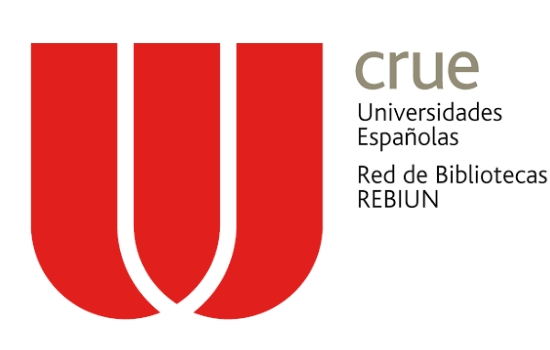Linguagem escrita e matemática: Um Viés Etnomatemático
Keywords:
Etnomatemática, Linguagem, Semiótica, Ethnomathematics, Language, SemioticsAbstract
Resumo
Exploram-se algumas relações entre linguagem e matemática desde um olhar etnomatemático, discutindo-se a presença de regras sintáticas dentro de diversas produções culturais, regras que são estritamente seguidas e provem espaço para a criatividade. O referencial teórico é providenciado pelos trabalhos sobre linguagem de André Cauty e sobre semiótica de Raymond Duval. Isto leva a perguntar sobre a necessidade de uma rigorosa sintaxe como elemento distintivo na atividade matemática, ou seja, dentro do conjunto das ticas de matema de um grupo particular. Este trabalho salienta a ampliação do conceito de texto matemático, para albergar uma serie de praticas culturais não sempre reconhecidas.
AbstractSome relations between Language and Mathematics are explored, using an ethnomathematical insight, discussing the existence of syntactical rules in several cultural practices. Rules are followed in a strict order and simultaneously bringing enough space to creative acts. The theoretical framework is provided by the work of André Cauty on language and Raymond Duval on semiotics. The question about the necessity of a strong syntax as a characteristic feature of mathematical practices is addressed, in other terms, inside the set of mathematical practices in a specific human group. The article encourages the reader to look for a wider concept of “mathematical text”, leading into the consideration of several cultural practices that often remain unrecognized.
Downloads
References
Ariza, M. (2007). Hacia una interpretación semiótica de los signos matemáticos. Mathesis 2 (2), 227-251.
Aroca, A. (2007). Una propuesta de enseñanza de geometría desde una perspectiva cultural. Comunidad indígena Ika. Sierra Nevada de Santa Marta. (Trabajo de investigación de maestría no publicado). Instituto de Educación y Pedagogía, Universidad del Valle, Cali-Colombia.
Ascher, M. (1981). Mathematics of the Incas. Code of de Quipu. New York: Dover Publications Inc.
Baldino, R. R. (1996). O “Mundo-Real” e o Dia-a-Dia na Produção de Significados Matemáticos. BOLEMA, 15(12), p. 1 – 11.
Barton, B. (2008). Language of Mathematics: telling mathematical tales. New York: Springer Science.
Caicedo, N., Parra, A. (Eds) (2008). Matemáticas en el mundo nasa. Bogotá: CIIIT.
Cauty, A. (1998). Etnomatemáticas: El Laboratorio Kwibi Urraga de la Universidad de la Guajira. [Artigo em blog] Disponível em http://etnomatematica.org/articulos/cauty4.pdf
Cauty, A. (2001). ¿Cómo seguir siendo amerindio y aprender las matemáticas que necesitará? In: G. Zapata (ed.). Pluriculturalidad y aprendizaje de la matemática en América latina. Madrid: Morata.
Cauty, A., Hoppan, J-M. (2005) Aritmética Maia. Scientific American Brasil, São Paulo, edição especial, (35) , p. 16-19.
D'Ambrosio, U. (1985). Ethnomathematics and its Place in the History and Pedagogy of Mathematics. For the Learning of Mathematics 5 (1), 44-48.
Duval, R. (1999). Semiosis y pensamiento humano. Santigo de Cali: Univalle.
Ferrater-Mora, J. (2001). Dicionário de filosofia. Tradução de Roberto Leal Ferreira e Álvaro Cabral. 4. ed. São Paulo: Martins Fontes.
Galilei, G. (1999). O Ensaiador. São Paulo: Nova Cultural.
Gerdes, P. (1999). Geometry from Africa: Mathematical and educational explorations. Washington, DC: The Mathematical Association of America.
Gerdes, P. (2002). Lusona: recreações geométricas de África. Maputo: Moçambique Editora.
Lins, R. (2004). Matemática, monstros, significados e educação matemática. En : Bicudo, Maria & Borba, M. (orgs). Educação Matemática – pesquisa em movimento. (pp. 92-120). São Paulo: Cortez.
Meaney, T., Fairhill, U., & Trinick, T. (2008). The Role of Language in Ethnomathematics. The Journal of Mathematics and Culture, 3(1), 52-65.
Rosa, M., Orey, D. C. (2003). Vinho e queijo: etnomatemática e modelagem!. BOLEMA. 16(20), 1–16.
Scandiuzzi, P. P. (2000). Educação Indígena x Educação Escolar Indígena: uma relação etnocida em uma pesquisa etnomatemática. Faculdade de Filosofia e Ciências, Universidade Estadual Paulista, Marília-Brasil.
Scandiuzzi, P. P. (2002). Água e Óleo: Modelagem e Etnomatemática?. BOLEMA, 15(17), 52-58.
Zalamea, F. (2008). Filosofía Sintética De Las Matemáticas Contemporáneas. Bogota: Universidad Nacional de Colombia.
Zalamea, F. (2007). Javier de Lorenzo: Por una filosofía dinámica de la praxis matemática. Mathesis III, 2(1), 1-35.
Downloads
Published
How to Cite
Issue
Section
License
Once the article is accepted by the Latin American Journal of Ethnomathematics, the authors cede the rights to publish and distribute the text electronically, including storing it and making it available online.
The authors can distribute their own material without soliciting permission from the Latin American Journal of Ethnomathematics, whenever mentioning that the original version is found at http://www.revista.etnomatematica.org
Copyright © 2008, Latin American Journal of Ethnomathematics
All contents of the Latin American Journal of Ethnomathematics are published under the _ and can be used freely, giving credits to the authors and to the Journal, as established by this license.











